
Back in November I found out that one of our Mt. Hood Cherokees members is a volunteer woodcarver at a carousel museum. Councilmember Anne said on the Zoom meeting that it sounded like a good story for the newsletter, and I agree. Did you know I edit (and write, photograph, design, publish, and distribute) a newsletter for the Mt. Hood Cherokees? I have been doing that for seven years now and I put my heart into it.
Oweta Smith invited me to the Historic Carousel & Museum of Albany, Oregon. I wanted to ask her about woodcarving, and she suggested that I meet her there. I first heard of the museum a short time earlier, when Tara said they were applying for a job there. I was eager to see it. The building, near a park in downtown Albany, is stunningly beautiful and I’m sorry I did not think to get a photo of it.
Gustav Dentzel came to America from Germany in 1864 and is one of the country’s first carousel makers. He is credited with introducing the idea of a menagerie of animals on a carousel, rather than the traditional horses. His great-grandson William Dentzel III donated a historic carousel mechanism when he heard that the city of Albany wanted a carousel. The mechanism was brought to life by local machinists who formerly worked at a paper mill. Likely resulting from this fabulous family history, William had a collection of historic carousel animals. In the museum, the citizens of Albany have the city centerpiece and tourist draw they were hoping for, and William has a beautiful safe place for his collection.

Just like the city of Leavenworth that I recently blogged about had to re-invent itself, the city of Albany did the same. Wendy Kirbey pitched the idea to the city council in 2002. Oweta was living in Albany in 2003. “I read a notice in the paper saying that they were hoping to create a carousel in downtown Albany and wanted people to volunteer to learn to carve. I thought, ‘Well, I’ve never carved before. That sounds fascinating. I’ll give it a try.’” Jack Giles, the lead carver, taught her and the other volunteers how to carve, and it took until 2017 to have enough animals and sufficient donations to open the museum.

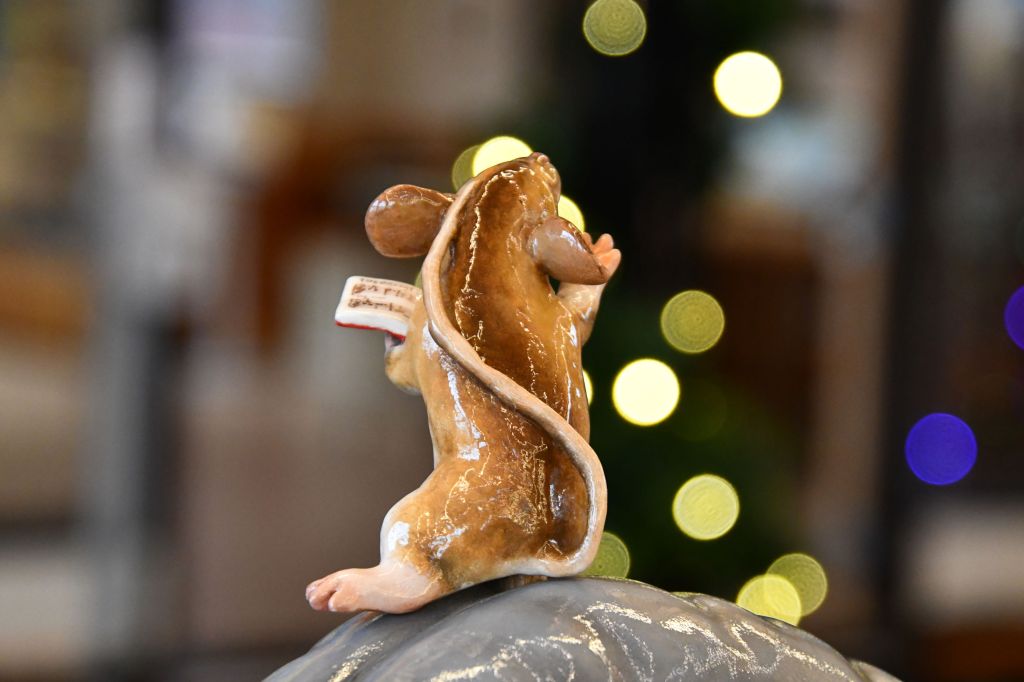
Sponsors of carousel animals get to choose the animal and items that go with the animal, and the ideas are reviewed by a committee. Once the plans are drawn out, it then goes to carvers who begin working. Animals on the carousel are worked on by multiple people. Oweta has been carving on the carousel since 2003 and is currently working on a Christmas Clydesdale.
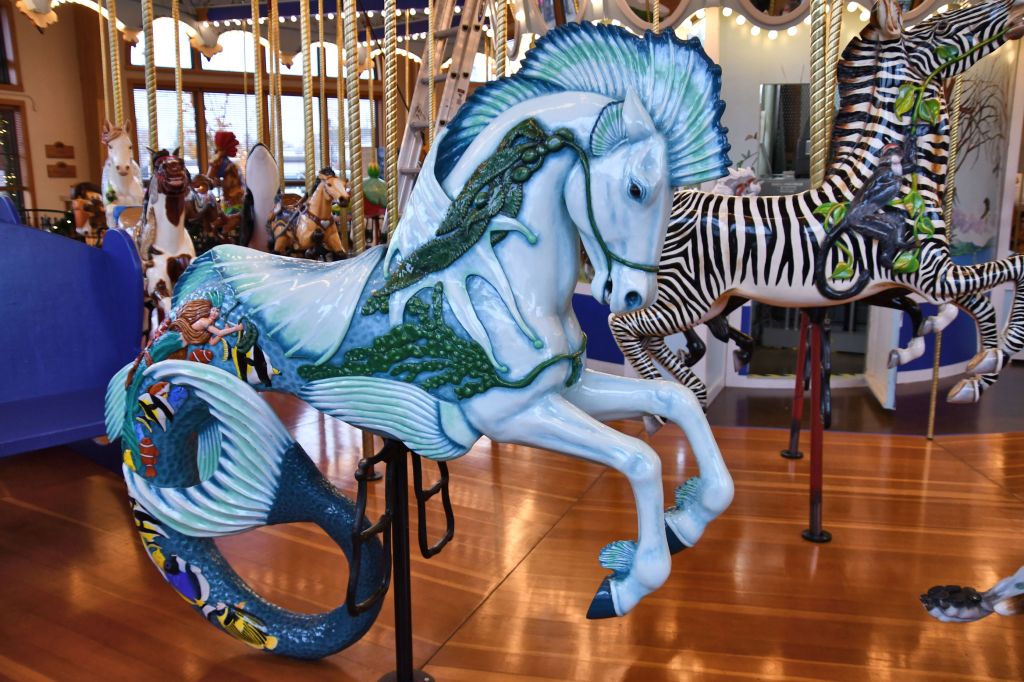
“Back when it started,” Oweta explained, “the animals hadn’t been adopted yet, so we started with flowers and pieces for the rounding board above the animals. It turns out that carving flowers is a great way to learn, so that tradition is still used today. The hippocampus was one of the first animals.” She explained that carousels from around 1900 were all horses, but traditionally had one hippocampus. We walked over to look at the hippocampus and she said, “The two front legs are mine. It’s really amazing, as someone who hadn’t carved before, to say, ‘Wow look, I did that.’ I did bits and pieces of a number of different animals. The orca is the one I spent the most time on. I started it, and took it to about 80%, and then they had a team of carvers take over and finish it up.” She also worked on a horse named Vincent with a theme from Van Gough’s Starry Night, and on a burro named Summit.


I asked if she had ever thought about her Cherokee connections in relation to the carousel. Oweta took me over to the ring dispenser, which she had been able to sponsor, so she got to choose what it looks like. “I chose the Phoenix. I thought it was a good tie-in to the Cherokee Phoenix newspaper, which showed me the phoenix existed in Cherokee culture.” Spirit animals are in the clouds below the phoenix, including a turkey vulture, that she learned is also important in Cherokee culture.

Oweta introduced me to other volunteer carvers working that day. They worked together in a room, each with their own carving task in their hands. They used hand-held woodcarving tools to carefully chisel off small bits of wood. Giles, the lead carver, moved from person to person making himself available for questions, and giving encouragement. Most people had photographs or models in front of them to help them know where to carve and make their piece look realistically three-dimensional. Oweta explained that when people start carving an animal they begin looking for photos and animals in real life to see what they really look like, to help them carve. When she was working on the hippocampus, and trying to find examples of what a horse’s legs look like, a friend who has horses told her, “You know, they’re all different.” She laughed at the memory, and said, “And that’s true. They are.”



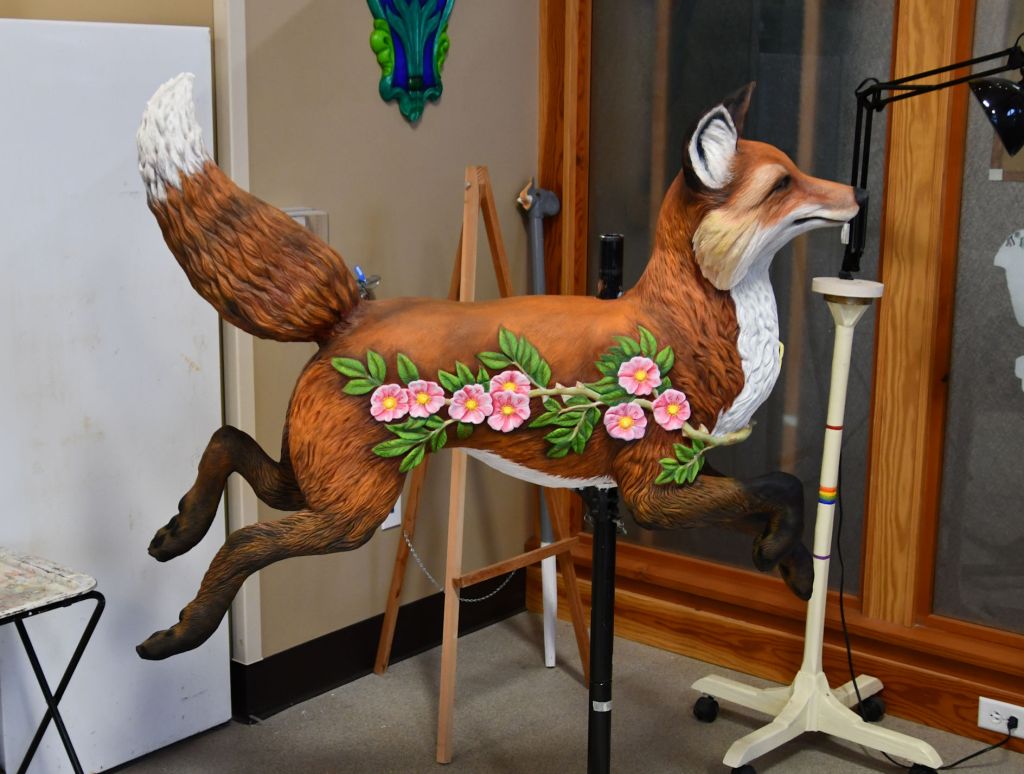
All of the carvers started good-naturedly asking me when I was going to join them as a volunteer. The question caught me completely off guard. Oweta reassured me that they would be happy to teach me, and said I should give it a try. So I did! Jack Giles came over and gave me a quick lesson and I began carving. It was a little addictive, and I stayed there for two hours, working on a flower.



The final peg in the story is that about two weeks after my visit, Tara got the job! I promise that my visit was entirely unrelated to Tara’s efforts, but I did proudly tell multiple people there that my kiddo was hoping to work there soon. While much of the work done at the carousel is done by volunteers, Tara is a paid employee and already loves the environment and their co-workers.
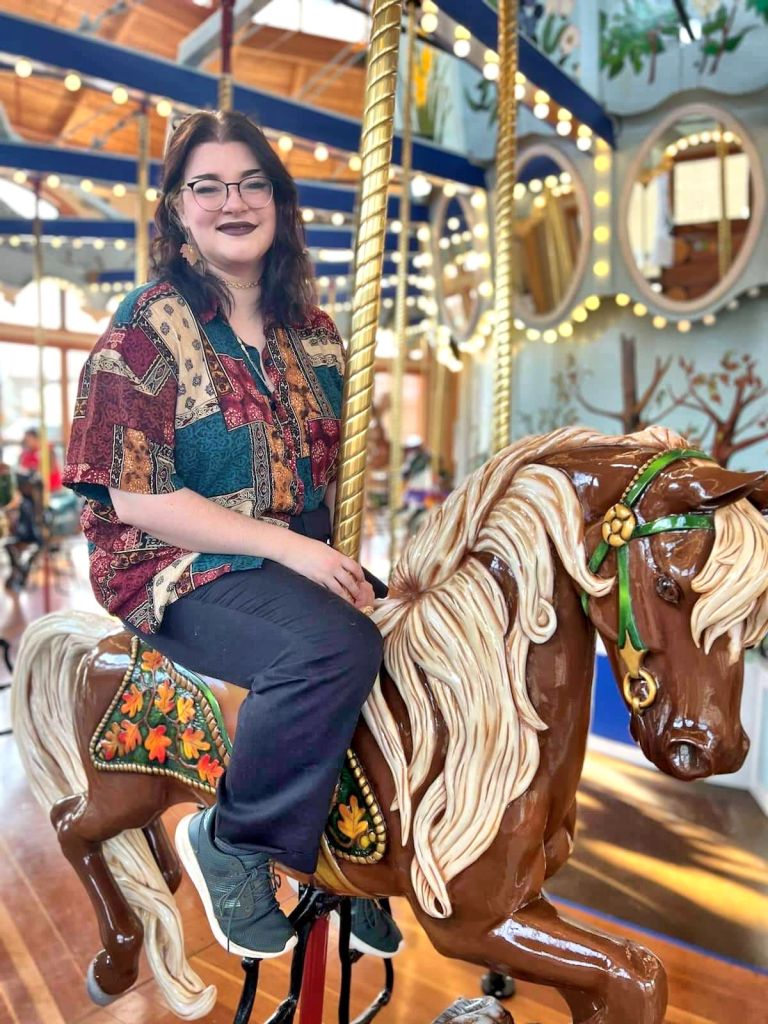
If you want to see drawings and explanations of each animal that was carved for the museum, this link will take you there.
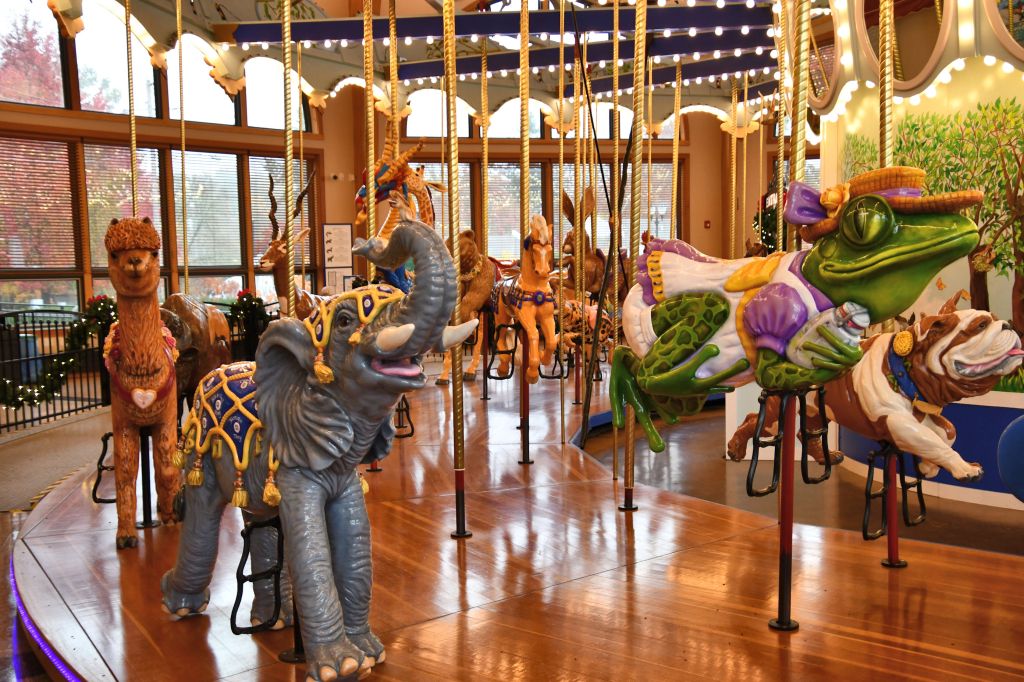
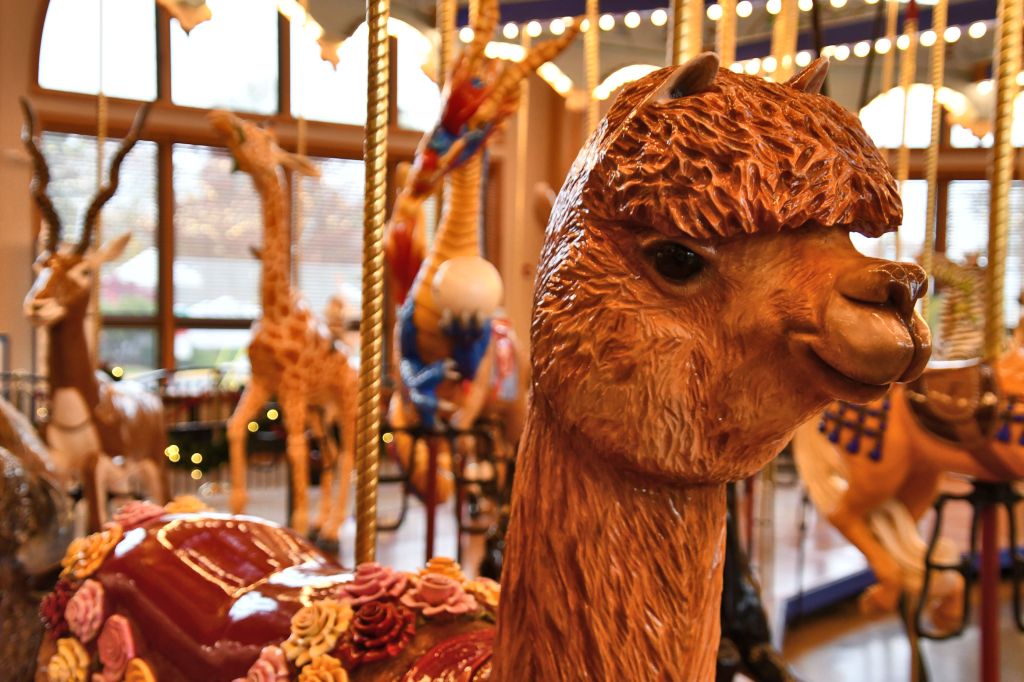



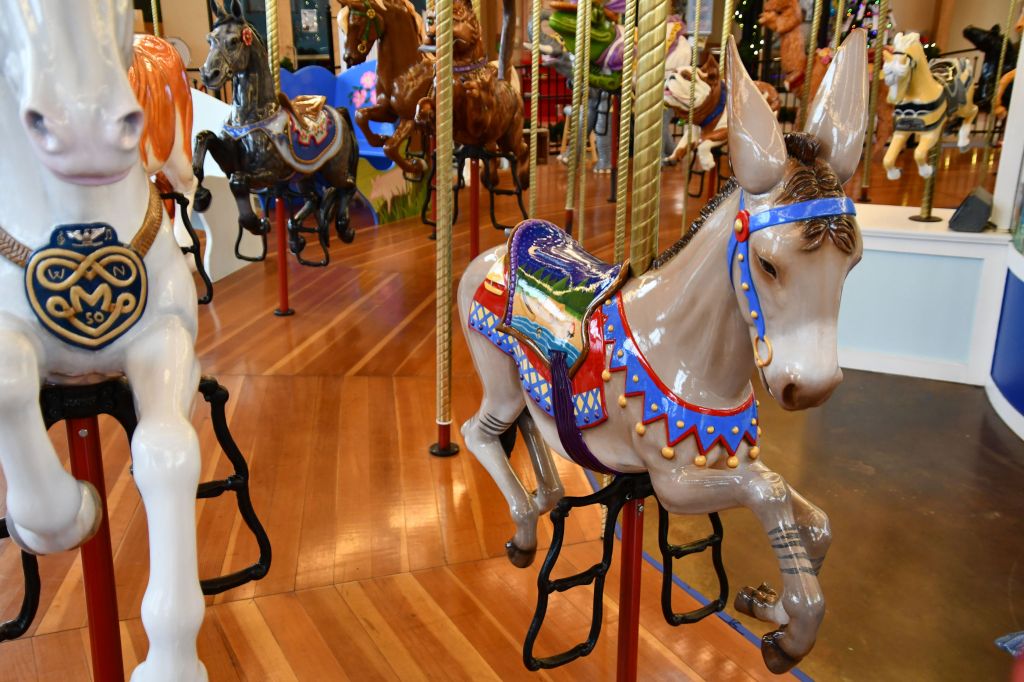



This is such an uplifting post. It’s so great, everything about it, down to both of you happy catching a ride. The fox is gorgeous, and all the animals, and those horse legs! The first effort too. Even though they are all different, legs of horses… 😀
I was thinking that same thing, after Oweta’s comment: “All those horse legs, and all different!” Especially the Clydesdale she is working on right now. I agree that the fox is gorgeous. I was happy that this fun visit ended with Tara getting a job there – so cool! Nothing to do with geology, but Tara says they’re ready for a break from geology after all these years, and I don’t blame them. It’s a fun place to work and the pay is good.
Very nice post, Crystal. Merry Christmas and feliz Navidad. 🎄
Oh thank you Brian! Merry Christmas and Feliz Navidad back atcha’! I’m glad you liked the post.
🤗
What a talent.
I thought so too, Andrew. Oweta was very humble and kept reminding me that she has no formal training and works slowly, etc. etc. But she showed me all the animals she worked on and they are all beautiful. She has been carving for 8 years as a volunteer and her value was obvious when I met the other volunteers and the employees, who all said they just loved having her there.
Absolutely marvellous work, very well photographed. Clicking through the gallery gives the impression of being on a carousel
That is the best comment, Derrick! I’m glad I was able to bring you onto the carousel with us. It’s one of those places that made me feel like a kid again.
What an amazing project. You would think only professionals could produce such works of art. Your photographs bring it all to life, and your attempt at carving flowers to me back to school days when we had one or two art lessons in carving.
I was amazed as well! Jack Giles is the only trained professional carver, though it seems to me that after volunteers carve for 17 years, as Oweta has, there should be some kind of career status associated with that, you know? I think the idea was unbelievably ambitious and I’m just delighted at how well it worked out. It’s great that the images of woodcarving took you back! I had never tried carving before and it is surprisingly accessible, though I’m sure making things look good is an additional level.
You’re absolutely right! After 17 years, you are no longer the apprentice.